I am trying to create a stitching algorithm. I have been successful in creating it with a few tweaks needed. The photos below are examples of my stitching program so far. I am able to provide it with an unordered list of image (so long as image is in flight path or side by side it will work regardless of their orientation to one another.


The issue is if the images are reversed some of the image doesn't make it into the final product. Here is the code for the actual stitching. Assume that finding keypoints, matching, and homography is done correctly.
By altering this code is there a way to centre the first image to the destination blank image and still stitch to it. Also, I got this code on stack overflow (Opencv Image Stitching or Panorama ) and am not fully sure how it works and would love if someone could explain it.
Thanks for any help in advance!
Mat stitchMatches(Mat image1,Mat image2, Mat homography){
Mat result;
vector<Point2f> fourPoint;
//-Get the four corners of the first image (master)
fourPoint.push_back(Point2f (0,0));
fourPoint.push_back(Point2f (image1.size().width,0));
fourPoint.push_back(Point2f (0, image1.size().height));
fourPoint.push_back(Point2f (image1.size().width, image1.size().height));
Mat destination;
perspectiveTransform(Mat(fourPoint), destination, homography);
double min_x, min_y, tam_x, tam_y;
float min_x1, min_x2, min_y1, min_y2, max_x1, max_x2, max_y1, max_y2;
min_x1 = min(fourPoint.at(0).x, fourPoint.at(1).x);
min_x2 = min(fourPoint.at(2).x, fourPoint.at(3).x);
min_y1 = min(fourPoint.at(0).y, fourPoint.at(1).y);
min_y2 = min(fourPoint.at(2).y, fourPoint.at(3).y);
max_x1 = max(fourPoint.at(0).x, fourPoint.at(1).x);
max_x2 = max(fourPoint.at(2).x, fourPoint.at(3).x);
max_y1 = max(fourPoint.at(0).y, fourPoint.at(1).y);
max_y2 = max(fourPoint.at(2).y, fourPoint.at(3).y);
min_x = min(min_x1, min_x2);
min_y = min(min_y1, min_y2);
tam_x = max(max_x1, max_x2);
tam_y = max(max_y1, max_y2);
Mat Htr = Mat::eye(3,3,CV_64F);
if (min_x < 0){
tam_x = image2.size().width - min_x;
Htr.at<double>(0,2)= -min_x;
}
if (min_y < 0){
tam_y = image2.size().height - min_y;
Htr.at<double>(1,2)= -min_y;
}
result = Mat(Size(tam_x*2,tam_y*2), CV_32F);
warpPerspective(image2, result, Htr, result.size(), INTER_LINEAR, BORDER_CONSTANT, 0);
warpPerspective(image1, result, (Htr*homography), result.size(), INTER_LINEAR, BORDER_TRANSPARENT,0);
return result;`